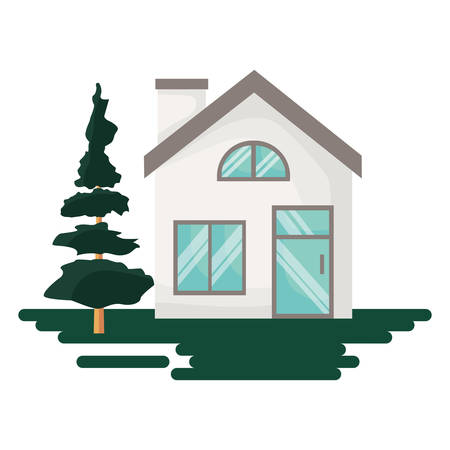Understand Your Target Buyer
Before you write your home listing, its essential to know who youre trying to reach. Understanding your target buyer helps you highlight the features that matter most to them. Every buyer is different—what appeals to a young professional might not resonate with a growing family or a retiree.
Identify Buyer Demographics
Start by thinking about the type of person most likely to buy your home. Consider factors such as age, income level, family size, and lifestyle. Is your home near good schools? That might attract families. Is it a modern condo in the city? That could appeal more to young professionals.
| Buyer Type | Key Characteristics | What They Look For |
|---|---|---|
| Young Professionals | Single or couples, ages 25-35, career-focused | Modern finishes, tech-friendly features, close to downtown |
| Families with Children | Ages 30-50, multiple family members, school-aged kids | Good school district, safe neighborhood, yard space |
| Retirees | Ages 60+, often downsizing or relocating for lifestyle | Low maintenance homes, quiet areas, single-story layout |
Understand Their Needs and Desires
Once youve identified your target buyer group, think about what they want in a home—and what they don’t. A busy professional may prioritize an updated kitchen and fast internet over a large backyard. On the other hand, a family will likely value multiple bedrooms and outdoor space.
Tip:
Use words in your listing that match what your audience is looking for. For example:
- For families: “Spacious backyard perfect for kids and pets.”
- For professionals: “Minutes from downtown with built-in smart home features.”
- For retirees: “Quiet neighborhood with easy access to shopping and healthcare.”
Create Buyer Personas
If youre unsure where to start, create simple buyer personas—short descriptions of your ideal buyers. This helps keep their needs top of mind when crafting your listing.
| Name | Description | Top Priorities |
|---|---|---|
| “Busy Brenda” | Single woman in her 30s working in tech downtown. | Commute time, modern appliances, low maintenance. |
| “Family Man Mike” | Dad of two looking for more space and good schools. | Safe neighborhood, extra bedrooms, big kitchen. |
| “Relaxed Rita” | Semi-retired woman moving closer to grandkids. | No stairs, quiet area, nearby parks. |
The more clearly you understand who you’re talking to in your listing, the easier it becomes to speak their language—and make them feel like your home is exactly what they’ve been searching for.
2. Highlight Unique Selling Points
When it comes to creating a winning home listing, one of the best ways to grab a buyer’s attention is by showcasing your home’s unique features. These are the standout qualities that make your property different—and better—than others on the market. Whether it’s a recently renovated kitchen or an energy-saving HVAC system, highlighting these details can help your home shine.
What Makes Your Home Special?
Buyers are often looking for homes that offer modern convenience, comfort, and value. Think about what sets your home apart. Is it the stainless-steel appliances in the kitchen? A beautifully landscaped backyard with a patio? Smart home technology? List out the features that make your home unique and valuable.
Common Standout Features Buyers Love:
| Feature | Why It Matters |
|---|---|
| Updated Appliances | Saves buyers money and adds a modern look to kitchens and laundry areas. |
| Outdoor Living Space | Great for entertaining guests or relaxing after work—popular in warmer climates. |
| Energy-Efficient Upgrades | Lowers utility bills and appeals to eco-conscious buyers. |
| Smart Home Features | Adds convenience and security with devices like smart thermostats or doorbells. |
| Renovated Bathrooms | A clean, updated bathroom makes a strong first impression. |
How to Showcase These Features
- Mention Them Early: Include your top selling points in the first few lines of your listing description.
- Add High-Quality Photos: Show off these features visually with bright, clear images taken in good lighting.
- Create Captions That Sell: Use captions to point out special upgrades, like “New quartz countertops installed in 2023.”
The goal is to help potential buyers picture themselves enjoying these upgrades as soon as they walk through the door—or even before they schedule a showing. By clearly presenting what makes your home stand out, you increase your chances of catching the right buyer’s eye quickly.

3. Craft a Compelling Listing Description
Once your home is clean, staged, and professionally photographed, it’s time to bring everything together with a compelling listing description. This is where you tell the story of your home in a way that connects with potential buyers emotionally while also giving them the key facts they need.
Use Emotionally Engaging Language
Your listing description should help buyers imagine what it’s like to live in the home. Instead of just stating features, describe how those features make life better. Here are some examples:
| Instead of… | Try Saying… |
|---|---|
| “3 bedrooms, 2 baths” | “Wake up in your sun-filled master suite and enjoy the convenience of two full bathrooms—perfect for busy mornings.” |
| “Updated kitchen” | “Whip up family meals or entertain guests in your stylish, recently renovated kitchen with quartz countertops and stainless steel appliances.” |
| “Large backyard” | “Step into your private oasis—a spacious backyard ideal for summer BBQs, gardening, or simply relaxing under the stars.” |
Be Concise but Informative
A great listing description gets to the point while still painting a vivid picture. Keep sentences short and avoid overused phrases like “won’t last long” or “must-see.” Focus on what makes your home unique.
Key Details to Include:
- The number of bedrooms and bathrooms
- Total square footage
- The type of neighborhood or community amenities nearby (parks, schools, shopping)
Tone Tips
- Friendly: Write as if youre talking to someone excited about their next chapter.
- Aspirational: Help them see themselves living happily in the space.
- Sincere: Avoid sounding too salesy—authenticity builds trust.
The right words can turn a good listing into one that stops buyers mid-scroll. With a little creativity and attention to detail, you’ll spark interest—and maybe even love at first sight.
4. Use High-Quality Photos and Video
When it comes to selling your home, visuals are everything. Most buyers start their search online, and the first impression they get is from your listing photos. That’s why it’s crucial to invest in high-quality photography that showcases your home in the best possible light.
Why Professional Photography Matters
Smartphone photos just don’t cut it when you’re trying to make your home stand out in a crowded market. A professional photographer knows how to highlight your home’s strengths—like natural lighting, room size, and design details—while minimizing distractions or flaws.
Benefits of Professional Photos
| Feature | Benefit |
|---|---|
| Wide-angle lenses | Makes rooms appear more spacious |
| Proper lighting | Creates a warm and inviting atmosphere |
| Editing and retouching | Removes minor imperfections for a polished look |
Add Value with Video Tours
A well-produced video tour gives potential buyers a better sense of your home’s layout and flow. It allows them to imagine walking through the space, which builds emotional connection before they even step inside.
Consider These Add-Ons:
- 3D Walkthroughs: Let buyers virtually explore every room at their own pace.
- Drone Footage: Show off your property’s exterior, yard, and neighborhood from above—especially effective for larger lots or homes with scenic views.
Tips for Getting the Best Visuals
- Shoot during the day when natural light is abundant.
- Clean and declutter each room before shooting.
- Add small staging touches like fresh flowers or accent pillows.
Your home only gets one chance to make a great first impression online. By using professional photos and videos, you dramatically increase your chances of attracting serious buyers quickly.
5. Set the Right Price Strategically
Pricing your home correctly is one of the most important steps in creating a winning listing. A well-priced home grabs attention, attracts more buyers, and can lead to faster offers—sometimes even above asking price. But how do you know what that “right price” is? It all starts with doing your homework.
Analyze Comparable Local Listings
Look at homes in your neighborhood that are similar in size, age, condition, and features. These are known as “comps” (short for comparables). Focus on listings that have recently sold rather than those still on the market, since sold prices reflect what buyers are actually willing to pay.
Here’s a simple way to compare:
| Address | Sq. Ft. | Beds/Baths | Sold Price |
|---|---|---|---|
| 123 Oak St. | 1,800 | 3/2 | $450,000 |
| 456 Pine Ave. | 1,750 | 3/2 | $440,000 |
| 789 Maple Dr. | 1,850 | 3/2 | $455,000 |
If your home is similar to these properties, pricing it around $445,000–$455,000 may be a smart move. Pricing too high can scare away buyers; pricing too low might leave money on the table.
Understand Current Market Trends
The real estate market constantly shifts. In a seller’s market (where demand exceeds supply), you might be able to price slightly higher. In a buyer’s market (where inventory is high), competitive pricing becomes essential. Stay informed by checking:
- The average days homes stay on the market in your area
- The list-to-sale price ratio (are homes selling for more or less than their asking price?)
- The number of active listings nearby
Work With a Real Estate Professional
A local real estate agent has access to detailed market data and can help guide you toward an effective pricing strategy. They’ll also take into account any upgrades or unique features your home has that could justify a higher price point.
Pro Tip:
Avoid round numbers like $400,000 exactly—listing at $399,900 can psychologically feel like a better deal to buyers browsing online filters.
6. Promote Your Listing Effectively
Once youve created a compelling home listing, the next crucial step is making sure it gets seen by as many potential buyers as possible. To do this, you need to promote your listing across multiple channels. Here’s how you can maximize your reach using online platforms, social media, and your real estate agent’s network.
Utilize Online Real Estate Platforms
Most homebuyers in the U.S. start their search online, so it’s important to make sure your listing is featured on popular real estate websites. These platforms attract millions of visitors each month and offer filters that help buyers find homes like yours.
Top Real Estate Websites in the U.S.
| Platform | Main Features |
|---|---|
| Zillow | Largest audience reach, Zestimate tool, 3D tours |
| Realtor.com | Accurate MLS data, strong mobile app presence |
| Redfin | User-friendly interface, map-based search features |
Leverage Social Media
Social media platforms are powerful tools for spreading the word about your home listing. They allow for visual storytelling through photos and videos, which can help generate interest quickly.
Tactics for Promoting on Social Media
- Facebook: Share your listing in local community groups and use Facebook Marketplace.
- Instagram: Post high-quality images and video walkthroughs using relevant hashtags like #HomeForSale or #OpenHouse.
- YouTube: Upload a virtual tour with a detailed description and share the link across other platforms.
Tap Into Your Agent’s Network
Your real estate agent has access to professional networks that can boost visibility among serious buyers. This includes email lists, internal brokerage connections, and MLS (Multiple Listing Service) listings that other agents rely on to find homes for their clients.
Your Agent Can Help With:
- Email campaigns targeting other agents and potential buyers
- Brokers’ open houses to showcase your home to industry professionals
- Syndicating your listing across multiple real estate websites automatically via the MLS
The more places your listing appears, the greater chance you have of attracting the right buyer. By promoting your home effectively through a combination of online platforms, social media efforts, and your agent’s network, you’ll significantly increase its exposure—and boost your chances of selling quickly and at a great price.

